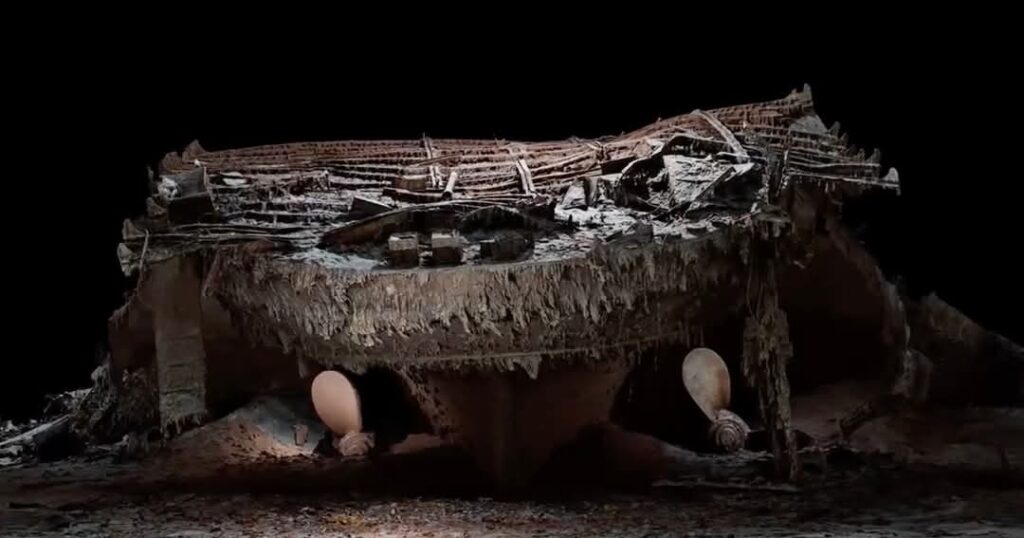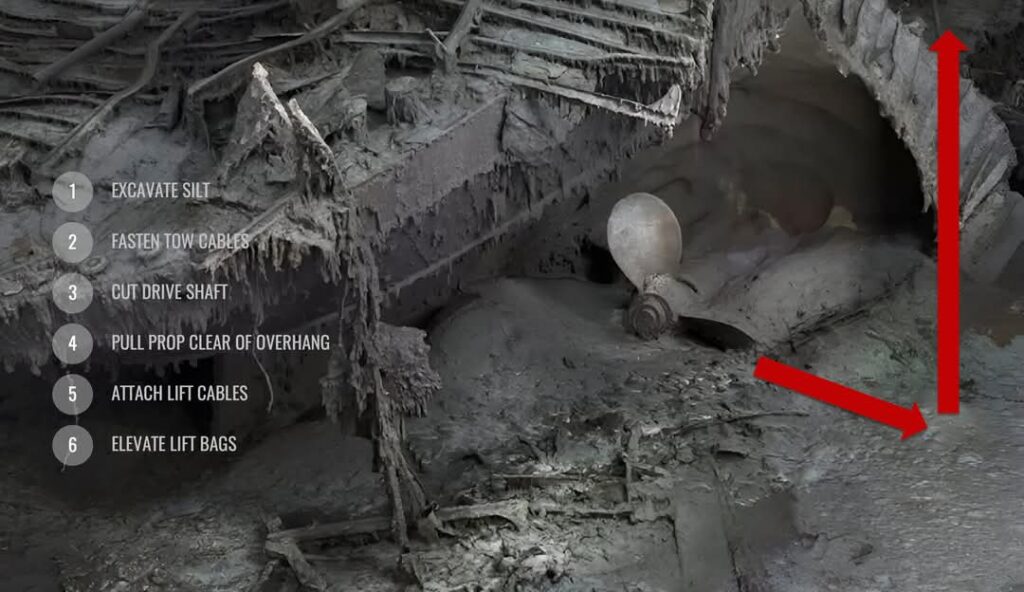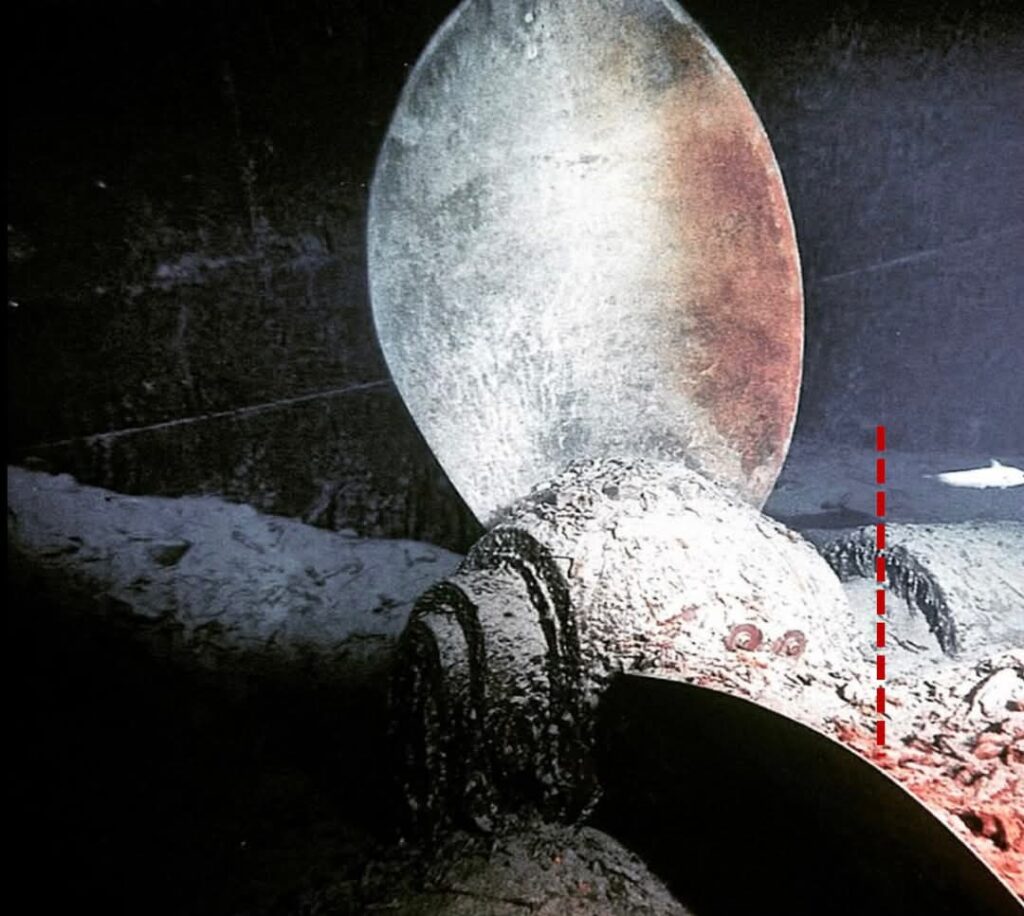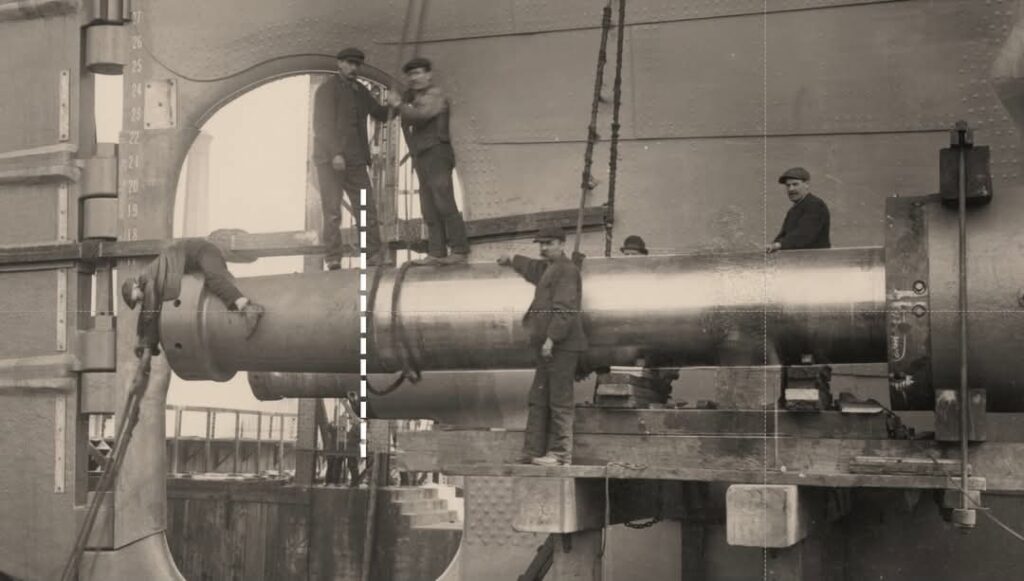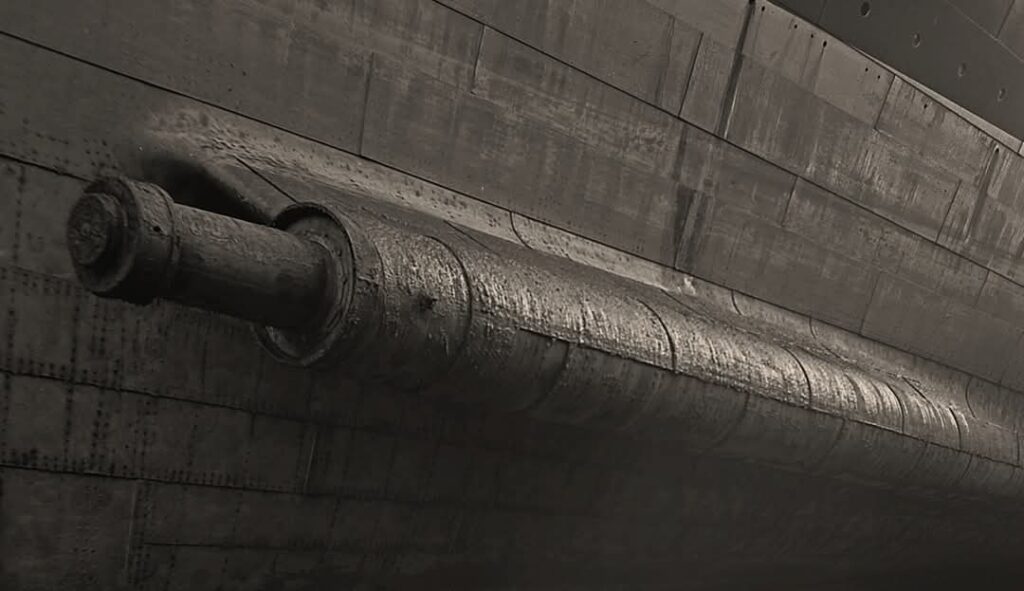Cast in resilient manganese-bronze, Titanic’s colossal port and starboard wing propellers were engineering marvels of their time. Measuring an impressive 23 feet 6 inches (7.16 meters) in diameter and each weighing a staggering 38 tons, these massive three-bladed propellers were forged to power the largest moving object ever built in the early 20th century. Each blade was precision-engineered, with a pitch of 35 feet, optimized to maximize propulsion and efficiency for Titanic’s 46,000-horsepower engines.Together, these wing propellers—symmetrically placed to port and starboard—worked in concert with a smaller, four-bladed central propeller, which itself measured 16 feet 6 inches (5.03 meters) across and weighed 17 tons. Unlike the wing props, the center screw was directly driven by the ship’s low-pressure Parsons turbine, while the wing screws were powered by her massive triple-expansion steam engines. This hybrid propulsion system was revolutionary, and its performance at sea set new standards in marine engineering.At the heart of each wing propeller lies its powerful steel shaft—approximately 24 inches (61 centimeters) in diameter, forged and machined to exacting standards to withstand the enormous torque delivered from Titanic’s engine rooms. These shafts extended the length of several decks, linking the power of man-made machinery to the open ocean. Even over a century later, their design and scale remain awe-inspiring.Now, after resting over two miles beneath the North Atlantic for more than 110 years, one of these titanic components—the starboard propeller—has become the centerpiece of a daring salvage effort.While both wing propellers are still visible on the seabed, only the starboard propeller remains in a condition suitable for recovery. The port propeller, by contrast, lies deeply buried within the twisted remnants of Titanic’s shattered stern, rendered largely inaccessible by the sheer violence of the ship’s final descent. When Titanic split in two in the early hours of April 15, 1912, the stern plummeted downward, twisting and imploding under the immense pressure as it sank. Today, it rests in near-total disintegration—an unrecognizable mass of crushed steel and collapsed decks.In contrast, the starboard propeller, though partially encrusted and resting against fractured wreckage, remains surprisingly intact—preserved by the cold, high-pressure environment of the deep. As time takes its toll and the structure around it decays, the moment to act is now. Before the stern collapses entirely—dragging the last intact propeller into unrecoverable darkness—it must be raised.Lift 3.1: Starboard Wing PropellerThe recovery operation calls for extreme precision and cutting-edge technology. The team will deploy a diamond wire saw—a tool commonly used in deepwater oil and gas operations, capable of slicing cleanly through thick, dissimilar materials such as steel shafts and composite bronze alloys. This high-performance tool consists of a flexible loop of diamond-embedded wire, which travels at speeds up to 1,200 meters per minute. Its average cutting speed is approximately one inch (25 mm) per minute, making it ideal for safely separating the starboard propeller from its massive drive shaft without disturbing the surrounding wreckage.Careful mapping, led by high-definition submersibles and 3D sonar imaging—thanks to partners like Magellan and Atlantic Productions—will guide the saw’s positioning and verify the structural integrity of the surrounding site before the cut is made. Once the propeller is cleanly severed from its shaft, a custom-designed lifting rig will begin the slow, delicate ascent to the surface.Lifting a 38-ton artifact from more than 12,000 feet beneath the sea is a feat of modern engineering on par with the very ship it once powered. The starboard propeller is more than a piece of machinery—it is a symbol of Titanic’s grandeur, craftsmanship, and legacy. Its recovery would not only preserve a vital part of maritime history but also serve as a powerful monument to the lives and labor entwined with the ship’s creation and tragic end.The race against time has begun. The stern will not hold forever.#Titanic #RMS_Titanic #RaiseTitanic #UnderwaterEngineering #DeepSeaRecovery #HistoricPreservation #Magellan #AtlanticProductions
